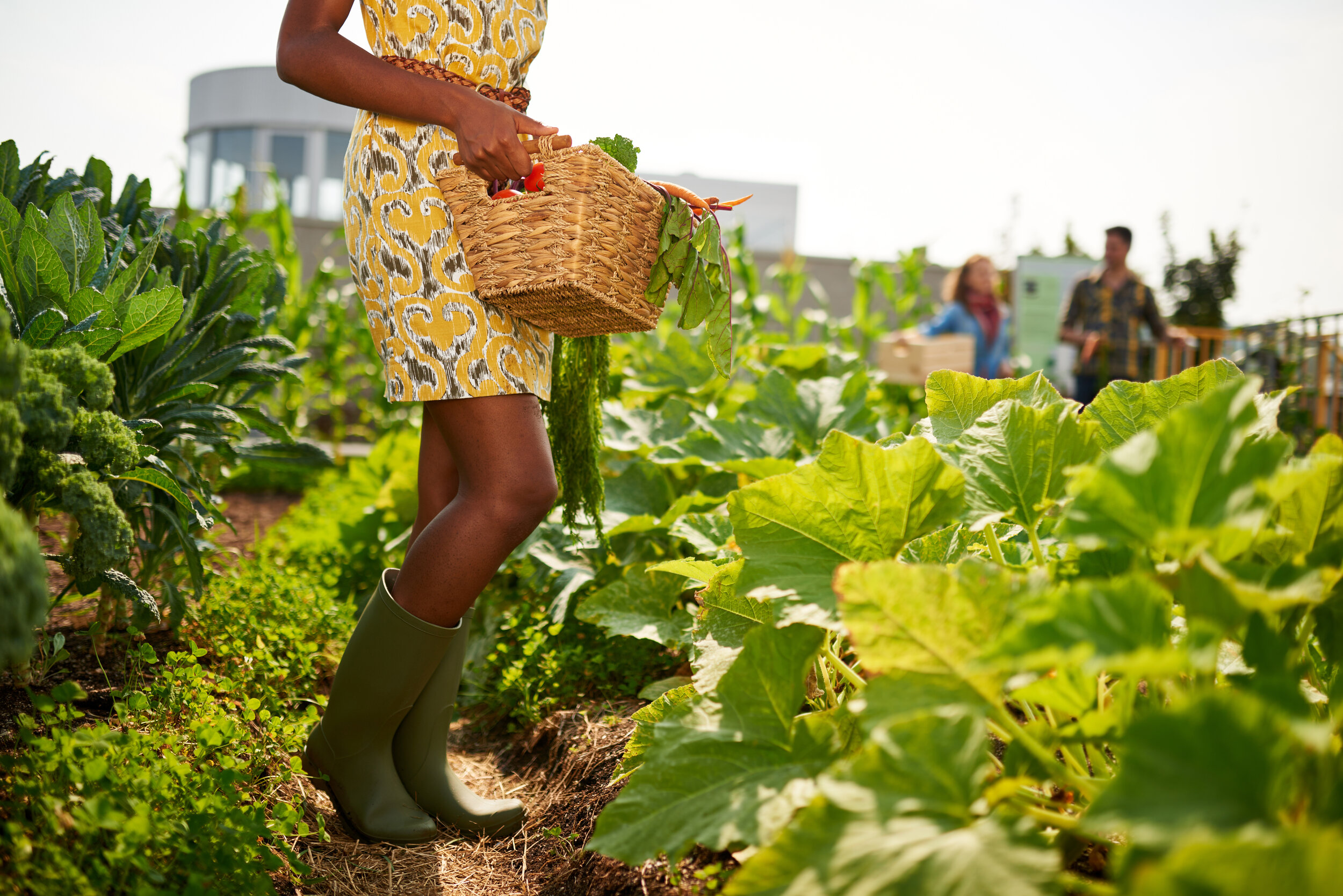

Articles
How To Start A Community Garden
Modified: January 18, 2024
Learn how to start a community garden and get expert tips on gardening. Create a green space in your neighborhood and connect with fellow gardeners.
(Many of the links in this article redirect to a specific reviewed product. Your purchase of these products through affiliate links helps to generate commission for Storables.com, at no extra cost. Learn more)
Introduction
Welcome to the world of community gardening! Whether you are a gardening enthusiast or someone who wants to make a positive impact in your community, starting a community garden can be a rewarding and fulfilling journey. Community gardens bring people together, foster a sense of belonging, and provide numerous benefits, both for individuals and the larger community.
In this article, we will explore the steps you need to take to start a community garden successfully. From finding a suitable location to securing funding and resources, we will guide you through every aspect of this process. So, let’s dive in and discover how you can create a thriving green space that will enrich the lives of all involved.
Key Takeaways:
- Cultivate a thriving community garden by finding a suitable location, gaining community support, and building a dedicated team. Embrace inclusiveness, sustainability, and collaboration for a successful and rewarding gardening journey.
- Ensure the long-term sustainability of your community garden by implementing sustainable practices, fostering community engagement, and efficient resource management. Create a vibrant hub of social interaction and learning for all involved.
Read more: What Is Community Garden
Benefits of Community Gardens
Community gardens offer a wealth of benefits that extend far beyond just growing plants. These green spaces serve as invaluable community assets that contribute to the physical, emotional, and social well-being of individuals. Here are some of the key benefits of community gardens:
- Promote healthy eating and nutrition: Community gardens encourage the consumption of fresh, organic produce. By growing their own fruits and vegetables, community members have access to nutritious food options that can improve their overall health and well-being.
- Enhance mental well-being: Gardening has been proven to have a positive impact on mental health. It provides a peaceful and therapeutic outlet for stress relief, promotes relaxation, and boosts mood and self-esteem.
- Foster community engagement: Community gardens serve as gathering places where people from diverse backgrounds can come together. They promote social interaction, strengthen community bonds, and create a sense of belonging.
- Environmental benefits: By cultivating green spaces, community gardens improve air quality, reduce heat islands in urban areas, and promote biodiversity. They also contribute to the conservation of water resources through rainwater harvesting and the use of sustainable gardening practices.
- Educational opportunities: Community gardens provide a hands-on learning environment where individuals of all ages can acquire gardening skills, learn about sustainable practices, and gain valuable knowledge about the natural world.
- Food security: Community gardens can help address food insecurity in neighborhoods with limited access to fresh produce. By growing their own food, community members can supplement their diets and reduce their reliance on store-bought groceries.
- Beautify the community: Well-maintained community gardens enhance the aesthetic appeal of the neighborhood, adding greenery, color, and natural beauty to urban environments.
These are just a few of the many benefits that community gardens offer. Now that we understand the significance of these green spaces, let’s move on to the next step: finding a suitable location for your community garden.
Finding a Suitable Location
When starting a community garden, finding the right location is crucial for its success. Here are some factors to consider when searching for a suitable site:
- Accessibility: Look for a location that is easily accessible to participants, especially those with limited mobility. Consider proximity to public transportation, schools, community centers, and residential areas.
- Sunlight and Soil Quality: Ensure that the site receives an adequate amount of sunlight for plant growth. It’s also important to assess the soil quality to determine if it needs amendments or if raised beds will be required.
- Water Availability: Access to a water source is essential. Look for a location where water is easily accessible for irrigation purposes. If a water source is not readily available, consider alternative methods such as rainwater harvesting or the installation of water tanks.
- Land Ownership: Determine who owns the land and obtain permission to use the site for a community garden. This may involve contacting local government authorities, schools, churches, or private landowners.
- Legal Considerations: Check local zoning and land use regulations to ensure that a community garden is permitted in the chosen location. Obtain any necessary permits or licenses required by local authorities.
- Size of the Site: Consider the size of the site and whether it can accommodate the desired number of garden plots, pathways, communal areas, and potential expansion in the future. Make sure the space is suitable for both gardening activities and community events.
- Security: Safety and security are important considerations. Look for a location that has low crime rates and where participants feel comfortable working and spending time.
- Community Support: Assess the level of community support for a community garden in the chosen location. Engage with local residents, community organizations, and potential gardeners to gauge their interest and seek their input.
Once you have identified a potential location that meets these criteria, it’s time to gain support from the community. In the next section, we will explore effective strategies for rallying support and building a strong network of garden enthusiasts.
Gaining Support from the Community
Building a strong support system within the community is essential for the success of your community garden. Here are some effective strategies to engage and gain support from the local community:
- Community Outreach: Start by reaching out to local residents, community organizations, schools, and other stakeholders to introduce the concept of the community garden. Organize informational meetings or workshops to share your vision, answer questions, and generate interest.
- Forming Partnerships: Collaborate with local organizations, such as neighborhood associations, schools, religious institutions, or non-profit organizations. These partnerships can provide resources, volunteers, and additional support for your community garden.
- Engaging Garden Enthusiasts: Identify individuals who are passionate about gardening and recruit them as volunteers or committee members. They can help spread the word, contribute their expertise, and attract more participants to the community garden.
- Hosting Community Workdays: Organize regular workdays where community members can come together to clean up the site, build raised beds, prepare the soil, or plant seedlings. This hands-on approach helps create a sense of ownership and fosters a stronger connection to the garden.
- Seeking Local Sponsorship: Approach local businesses or corporations for potential sponsorship or donations. They may be willing to contribute funds, gardening supplies, tools, or even offer their employees as volunteers.
- Creating an Online Presence: Utilize social media platforms, community forums, and local newsletters to promote your community garden. Share updates, photos, and success stories to generate excitement and engage a broader audience.
- Hosting Events and Workshops: Organize educational workshops, gardening demonstrations, or community events within the garden. These activities can attract more people, create opportunities for learning and networking, and enhance community involvement.
- Recognizing Contributions: Celebrate the efforts and achievements of volunteers and supporters. Acknowledge their contributions through newsletters, social media shout-outs, or volunteer appreciation events. This recognition builds a sense of camaraderie and encourages continued involvement.
Remember, building community support is an ongoing process. Regular communication, listening to feedback, and involving community members in decision-making are crucial for maintaining a successful and vibrant community garden. Once you have established a strong network of supporters, it’s time to assemble a dedicated team to drive the project forward.
Building a Team
Building a dedicated and passionate team is essential for the smooth operation of your community garden. Here are some steps to help you assemble an effective team:
- Identify Roles and Responsibilities: Determine the specific roles and responsibilities needed for your community garden, such as garden coordinator, volunteer coordinator, event coordinator, communications manager, and maintenance team members. Assign these roles based on the skills and interests of your team members.
- Recruit Volunteers: Reach out to your existing network and engage with potential volunteers who are interested in gardening, community development, or environmental sustainability. Advertise volunteer opportunities through local community centers, online platforms, and social media.
- Hold Team Meetings: Schedule regular team meetings to discuss project updates, exchange ideas, and address any concerns or challenges. Foster open communication and encourage active participation from all team members.
- Delegate Tasks: Assign specific tasks and projects to team members, matching their skills and interests. Clearly communicate expectations, deadlines, and any necessary guidelines or resources.
- Provide Training and Support: Offer training sessions or workshops to equip your team members with the necessary knowledge and skills for their roles. Provide ongoing support and guidance to ensure that everyone feels confident in their contributions.
- Cultivate a Positive Team Culture: Foster a supportive and inclusive team environment where everyone feels valued and respected. Encourage teamwork, collaboration, and appreciation for each other’s efforts.
- Encourage Professional Development: Support the growth and development of your team members by providing opportunities for learning, attending relevant workshops or conferences, and gaining new skills in areas such as gardening techniques, community organizing, or sustainable practices.
- Celebrate Successes: Acknowledge the accomplishments and hard work of your team members. Celebrate milestones, achievements, and successful initiatives. This recognition and appreciation will keep the team motivated and engaged.
Remember, building a strong team takes time and effort. Continuously assess the needs and dynamics of your team, and be open to feedback and suggestions. As your community garden grows and evolves, so too should your team. Together, you can create a thriving and sustainable community garden that benefits everyone involved.
Read more: How To Start A Patio Garden
Securing Funding and Resources
Securing funding and resources is an important step in establishing and maintaining a successful community garden. Here are some strategies to help you secure the necessary financial support and resources:
- Research Funding Opportunities: Start by researching local government grants, community development programs, and funding opportunities specifically designed for community gardens. Look for grants that align with your garden’s mission and goals.
- Write Grant Proposals: Prepare well-written and compelling grant proposals that clearly outline the purpose of your community garden, the anticipated outcomes, and the budget requirements. Highlight the social, environmental, and educational benefits that the garden will provide to the community.
- Engage with Local Businesses: Approach local businesses and corporations for potential sponsorships or partnerships. They may be willing to provide financial support, donate gardening supplies, or offer services such as landscaping or irrigation system installation.
- Organize Fundraising Events: Plan and host fundraising events within the community to generate funds for your garden. This could include hosting plant sales, garden tours, workshops, or community dinners. Engage volunteers to assist with organizing and promoting these events.
- Seek In-Kind Donations: Reach out to garden centers, nurseries, landscaping companies, and other local organizations to inquire about in-kind donations. This could include soil, compost, seeds, plants, gardening tools, or even the use of equipment or expertise.
- Crowdfunding: Consider setting up a crowdfunding campaign to raise funds online. Utilize social media platforms and your community network to spread the word and encourage donations from individuals who believe in your garden’s mission.
- Collaborate with Community Organizations: Partner with local non-profit organizations, schools, or community centers to explore shared funding opportunities. Collaborative projects often have greater chances of securing grants or sponsorships.
- Engage the Garden Community: Connect with other community garden initiatives or gardening clubs in your area. Engage in knowledge-sharing and resource-sharing, participate in joint fundraising efforts, and explore collaborative projects that could benefit both parties.
- Acknowledge and Recognize Donors: Show gratitude towards your donors and sponsors by acknowledging their contributions. Consider displaying thank-you signs or plaques in the garden, mentioning them in newsletters or on your website, and inviting them to special garden events.
Remember, securing funding and resources may require ongoing efforts and continuous relationship-building with potential supporters. Be diligent in your search, explore various avenues, and always stay open to new opportunities. With proper funding and resources, your community garden can thrive and make a lasting positive impact on your community.
Designing the Garden Layout
The design of your community garden plays a crucial role in maximizing the use of space, promoting accessibility, and creating an aesthetically pleasing environment. Here are some considerations to keep in mind when designing the layout of your garden:
- Plot Allocation: Divide the garden into individual plots that can be assigned to community members or groups. Consider the size and shape of the plots to ensure they are manageable for gardeners of all abilities.
- Pathways: Plan for wide, accessible pathways throughout the garden to accommodate wheelchair users, strollers, and individuals with limited mobility. Ensure that the pathways are well-maintained, level, and constructed with durable materials like gravel or concrete.
- Gathering Spaces: Include communal areas within the garden where gardeners can come together, relax, and engage in social activities. This could be a seating area with benches, picnic tables, or a designated space for community events.
- Water Source: Determine the location of water sources such as taps or rainwater collection systems. Make sure they are conveniently located and easily accessible for irrigation purposes.
- Composting Area: Allocate a space for a composting area where gardeners can dispose of organic waste and create nutrient-rich compost for the garden. Ensure proper signage and guidelines are in place to educate gardeners on the composting process.
- Tool Shed and Storage: Designate a storage area or tool shed to house gardening tools, equipment, and supplies. Ensure it is secure, weather-resistant, and conveniently located for easy access by gardeners.
- Consider Microclimates: Take into account the different microclimates within the garden. Identify areas that receive more sunlight, shade, or have exposure to wind or other environmental factors. Use this knowledge to determine where to plant specific crops and create microclimate zones within the garden.
- Planting Beds and Structures: Plan for raised beds or traditional planting beds based on the soil condition and needs of the gardeners. Consider incorporating trellises, arbors, or other structures for vertical gardening or to support climbing plants.
- Accessibility: Ensure that the garden layout and structures are accessible to individuals with disabilities. This may include raised beds at appropriate heights for wheelchair users, ramps or railings for easy navigation, and clear signage throughout the garden.
- Flexibility and Future Expansion: Design the garden layout with flexibility in mind to accommodate future expansion or changes. Consider the potential growth of the garden and plan accordingly to avoid overcrowding or restricted space in the future.
When designing the garden layout, involve the community in the decision-making process. Seek input from gardeners, volunteers, and stakeholders to ensure the design reflects the needs and preferences of the community. By creating an efficient and well-designed space, you can enhance the gardening experience and promote a sense of unity within your community garden.
When starting a community garden, it’s important to secure a suitable location with access to sunlight and water, and to involve the local community in the planning and decision-making process.
Preparing the Soil
The health and fertility of the soil are vital to the success of your community garden. Preparing the soil properly ensures that plants have access to essential nutrients and water, leading to robust growth and bountiful harvests. Here are some steps you can take to prepare the soil for your community garden:
- Test the Soil: Start by testing the soil to determine its pH level and nutrient content. This will help you understand any deficiencies or imbalances in the soil and guide you in making necessary amendments.
- Clear the Area: Remove any weeds, rocks, or debris from the garden area. Clearing the area allows for a fresh start and prevents competition for nutrients and space.
- Amend the Soil: Based on the soil test results, add amendments to improve the soil quality. This might include organic matter such as compost, well-rotted manure, or leaf mold to enhance soil structure and fertility. Incorporate the amendments thoroughly into the existing soil.
- Loosen the Soil: Use a garden fork or tiller to loosen compacted soil. This allows for better root penetration, improves drainage, and promotes the circulation of air within the soil. Avoid over-tilling, as it can disrupt the soil ecosystem and lead to soil compaction over time.
- Consider Raised Beds: If the soil is poor quality or difficult to work with, consider using raised beds. Raised beds allow for better control over soil quality and drainage, and they can be filled with a mix of compost, topsoil, and other organic materials.
- Mulch: Apply a layer of organic mulch, such as straw or wood chips, on the soil surface. Mulch helps conserve moisture, suppresses weed growth, and adds organic matter to the soil as it decomposes.
- Rotate Crops: Practice crop rotation to minimize the risk of soil-borne diseases and pest infestations. Rotate crops from different plant families each year to maintain soil health and fertility.
- Practice Soil Conservation: Implement practices like contour planting, terracing, or cover cropping to prevent soil erosion. These techniques help retain moisture, reduce weed growth, and preserve the structure and fertility of the soil.
- Maintain Organic Practices: Embrace organic gardening principles by avoiding synthetic fertilizers and pesticides. Instead, focus on using organic fertilizers, practicing companion planting, and employing natural pest control methods to promote a healthy and sustainable garden ecosystem.
- Regular Soil Maintenance: Regularly monitor the soil moisture levels and amend as needed. Conduct periodic soil tests to assess nutrient levels and adjust your fertilization practices accordingly.
By preparing the soil properly and maintaining its fertility, you provide an optimal growing environment for your community garden. Remember, healthy soil is the foundation for healthy plants and a successful garden.
Choosing the Right Plants
Selecting the right plants for your community garden is crucial for ensuring successful growth, maximizing productivity, and meeting the needs and preferences of the gardeners. Here are some factors to consider when choosing the plants for your garden:
- Climate and Hardiness: Consider your local climate and growing conditions. Choose plants that are well-suited to your region’s temperature, rainfall, and frost dates. Look for varieties that are known to be hardy and resilient in your area.
- Garden Space and Layout: Evaluate the available garden space and the layout of your plots. Take into account the size, growth habit, and spacing requirements of your chosen plants to ensure they fit well within the allocated area.
- Garden Goals and Preferences: Consider the goals and preferences of the gardeners involved. Are they interested in growing food crops, ornamental flowers, or a mix of both? Take into account their preferences for specific plant varieties or cultivars.
- Suitability for Community Gardening: Choose plants that are suitable for a community garden setting. This includes considering plants that are low-maintenance, disease-resistant, and have a relatively short growing season. Opt for plants that are easy to grow and suitable for gardeners of all experience levels.
- Companion Planting: Explore companion planting techniques to enhance plant growth and discourage pest infestations. Look for plant combinations that have mutually beneficial relationships, such as planting marigolds to deter pests or growing beans alongside corn for natural nitrogen fixation.
- Succession Planting: Plan for succession planting to maximize the use of space and ensure a continuous harvest throughout the growing season. Stagger planting times and choose crops with varying maturity dates to maintain a constant supply of fresh produce.
- Consider Local Adapted Varieties: Seek out locally adapted plant varieties or heirloom varieties that thrive in your region. These plants are often better suited to the local climate and have developed resilience to specific environmental factors.
- Diversity: Aim for a diverse selection of plants in your community garden. Incorporate a mix of different vegetables, herbs, flowers, and even native plants to promote biodiversity and attract beneficial insects.
- Economic Considerations: If your community garden aims to provide food security or save on grocery expenses, consider growing high-yield crops or those that are relatively expensive to buy in stores. This can help maximize the economic benefits of the garden for participants.
- Accessibility: Cater to the needs of all gardeners by including plants that are accessible to individuals with disabilities. Choose plants that do not require bending or reaching too far and provide clear pathways and bed heights suitable for wheelchair users.
Remember, selecting the right plants requires careful planning and consideration. Consult with experienced gardeners, local agricultural extension offices, or horticultural societies for recommendations specific to your region. By choosing the right plants, you will create a thriving and diverse community garden that meets the needs and desires of all involved.
Read more: How To Start An Indoor Garden
Managing Garden Maintenance
Proper garden maintenance is essential for the long-term success and productivity of your community garden. Regular maintenance helps ensure healthy plant growth, minimizes weed competition, and reduces the risk of pest and disease infestations. Here are some key aspects to consider when managing the maintenance of your community garden:
- Establish a Maintenance Schedule: Create a maintenance schedule that outlines the tasks to be performed regularly. This includes watering, weeding, pruning, fertilizing, pest control, and general upkeep of the garden. Assign specific responsibilities to individuals or teams for each task.
- Watering: Monitor the soil moisture levels and water the garden as needed. Irrigate in the early morning or late afternoon to minimize evaporation. Use mulch around plants to retain moisture and reduce the frequency of watering.
- Weeding: Stay on top of weed management by regularly removing weeds from the garden. Regular weeding prevents competition for nutrients and reduces the risk of weed infestations. Consider using mulch or organic weed control methods to suppress weed growth.
- Pruning and Deadheading: Prune plants as needed to remove dead or damaged branches, promote proper airflow, and shape the growth. Deadhead flowers to encourage continuous blooming and prevent seed production.
- Fertilizing: Apply organic fertilizers or compost to provide essential nutrients to the plants. Follow recommended application rates and timing for optimal growth. Consider conducting soil tests periodically to assess nutrient deficiencies and adjust fertilization practices accordingly.
- Pest and Disease Control: Monitor plants for signs of pests or diseases and take appropriate action to manage the issues. This may include handpicking pests, using organic pest control methods, or, in severe cases, employing approved garden-friendly pesticides.
- Support and Staking: Provide support or staking for plants that require it, such as tall-growing vegetables or climbing plants. This helps prevent damage and ensures proper growth and productivity.
- Crop Rotation: Practice crop rotation to minimize the risk of pest and disease buildup in the soil. Plan your planting beds in a way that allows for crop rotation each season, moving plants from different families to new locations.
- Regular Inspections: Conduct regular inspections of the garden to identify any issues or abnormalities. Look for signs of nutrient deficiencies, pest damage, or disease symptoms. Promptly address any problems to prevent them from spreading.
- Education and Workshops: Provide educational resources and workshops to gardeners about proper garden maintenance practices. This empowers gardeners to take care of their plots and promotes a collective sense of responsibility for the overall garden maintenance.
- Encourage Good Hygiene Practices: Encourage gardeners to practice good hygiene, such as cleaning tools, properly disposing of plant debris, and promptly removing diseased plants to prevent the spread of diseases.
Maintaining a well-managed and thriving community garden requires regular attention and teamwork. Encourage gardeners to actively participate in the maintenance of the garden and foster a sense of ownership and pride in the shared space. By staying on top of garden maintenance tasks, you can create a healthy and abundant garden that brings joy and fresh produce to all involved.
Organizing Community Events
Community events in your garden not only bring people together but also foster a sense of belonging and create a strong sense of community. These events provide opportunities for education, celebration, and social interaction. Here are some ideas and tips for organizing successful community events in your garden:
- Workshops and Educational Sessions: Hold workshops and educational sessions on various aspects of gardening, such as composting, organic pest control, or seed saving. Invite guest speakers, experienced gardeners, or local horticultural experts to share their knowledge.
- Community Garden Tours: Organize tours of your community garden to showcase the hard work and achievements of the gardeners. This allows participants to learn from each other, exchange ideas, and gain inspiration for their own plots.
- Plant Exchanges: Arrange plant exchanges where gardeners can share surplus plants, seeds, or cuttings with each other. This promotes biodiversity, helps gardeners diversify their gardens, and fosters a culture of sharing and community support.
- Harvest Celebrations: Host harvest celebrations to acknowledge the abundance and success of your community garden. Plan potluck meals, cooking demonstrations, or food tasting events using the produce grown in the garden. This promotes a sense of pride among gardeners and strengthens the garden community.
- Seasonal Festivals: Organize seasonal festivals or themed events to celebrate the changing seasons and the garden’s annual cycle. This could include a spring planting festival, a summer solstice celebration, or a fall harvest fair. Incorporate activities, games, music, and food to create a festive atmosphere.
- Garden Art and Craft Exhibitions: Showcase the creative talents of your gardeners by organizing art and craft exhibitions or sales within the garden. This can include paintings, sculptures, handmade garden accessories, or even artwork created from natural materials found in the garden.
- Volunteer Appreciation Events: Recognize and celebrate the valuable contributions of your volunteers by hosting appreciation events. This can be a simple gathering or a more elaborate ceremony to express gratitude for their time, effort, and dedication towards the garden. Offer small tokens of appreciation or certificates as a gesture of thanks.
- Children’s Activities: Organize activities specifically designed for children, such as garden-themed craft workshops, storytelling sessions, or scavenger hunts. Encouraging children to engage with the garden fosters their love for nature and plants, and sets the foundation for future generations of gardeners.
- Collaborate with Local Organizations: Collaborate with local organizations, schools, or community centers to co-host events or workshops. This expands your reach, brings in new participants, and strengthens community bonds.
- Publicize and Engage: Promote your events through various channels, such as social media, newsletters, community bulletin boards, and local newspapers. Engage with the wider community by inviting neighboring residents, local businesses, and community groups to participate.
When organizing community events, remember to involve the gardeners in the planning process. Seek their ideas and suggestions, and encourage them to actively participate. By creating enjoyable and inclusive events, you foster a sense of community and make your community garden a vibrant hub of social interaction and learning.
Ensuring Sustainability
Ensuring the long-term sustainability of your community garden is essential to its continued success and impact. By implementing strategies to promote environmental sustainability, community engagement, and efficient resource management, you can create a garden that thrives and benefits both current and future generations. Here are some key steps to ensure the sustainability of your community garden:
- Implement Sustainable Gardening Practices: Embrace organic gardening techniques, such as using compost, organic fertilizers, and natural pest control methods. Minimize the use of synthetic chemicals that can harm the environment and human health. Encourage sustainable gardening practices among gardeners by providing resources and education.
- Water Conservation: Promote water conservation by using efficient irrigation methods such as drip irrigation or rainwater harvesting. Encourage gardeners to water their plants during the early morning or late evening to minimize water evaporation. Implement mulching to retain soil moisture and reduce the need for frequent watering.
- Composting: Encourage composting within the garden to reduce organic waste and create nutrient-rich soil amendments. Educate gardeners on the benefits of composting and provide resources and guidance on proper composting techniques.
- Biodiversity: Foster biodiversity within your garden by incorporating native plants, creating habitat areas for beneficial insects and wildlife, and avoiding the use of harmful pesticides. Encourage gardeners to grow a variety of plant species and practice companion planting to attract beneficial insects and pollinators.
- Community Collaboration: Foster a sense of community ownership and engagement by involving gardeners in decision-making processes. Encourage active participation and collaboration through regular meetings, feedback opportunities, and shared responsibilities.
- Education and Skill-building: Provide educational opportunities for gardeners to learn sustainable gardening techniques, composting, and other relevant skills. This empowers individuals to apply these practices not only in the garden but also in their own homes and communities.
- Seed Saving: Encourage the practice of seed saving to preserve heirloom varieties and promote genetic diversity. Educate gardeners on the importance of seed saving and provide resources on how to properly save and store seeds.
- Efficient Resource Management: Optimize the use of resources within the garden, such as water, tools, and supplies. Encourage sharing and proper maintenance of tools, implement efficient storage systems, and promote responsible use of resources to minimize waste.
- Continuous Evaluation and Improvement: Regularly assess the garden’s sustainability practices and identify areas for improvement. Seek feedback from gardeners and the community to better understand their needs and perspectives. Implement changes and adjustments accordingly.
- Community Outreach and Partnerships: Engage with the wider community through outreach programs, workshops, or collaborative projects. Build partnerships with local businesses, organizations, and educational institutions to leverage resources and expand the impact and reach of your community garden.
By implementing sustainable practices and fostering a strong sense of community, you can ensure the long-term sustainability and impact of your community garden. Remember, sustainability is an ongoing journey that requires continuous improvement and adaptation to changing needs and circumstances. By working together, your community garden can be a beacon of sustainability and inspiration for the wider community.
Conclusion
Congratulations! You have now learned the essential steps to start and maintain a thriving community garden. By diving into the world of community gardening, you have not only embarked on a journey of cultivating plants but also nurturing a sense of belonging, promoting sustainability, and fostering community engagement.
Throughout this article, we explored the benefits of community gardens, from promoting healthy eating and environmental stewardship to enhancing mental well-being and social connections. We delved into finding a suitable location for your garden, gaining support from the community, building a dedicated team, securing funding and resources, and designing an effective and accessible garden layout. We also discussed the importance of preparing the soil, choosing the right plants, managing garden maintenance, organizing community events, and ensuring the long-term sustainability of your garden.
Remember, a successful community garden is one that thrives not only in terms of plant growth but also in its ability to bring people together, educate, and inspire. It is a space where individuals of all ages and backgrounds can share their knowledge, learn from one another, and experience the joys of gardening and cultivating their own food.
As you embark on this exciting community gardening journey, embrace the principles of inclusiveness, sustainability, and collaboration. Foster a sense of ownership among gardeners, work towards environmentally friendly practices, and engage with the wider community to create a positive impact.
So, gather your tools, prepare the soil, and bring your community together in the green oasis of a community garden. Watch as it blooms not only with plants but also with the friendship, joy, and shared knowledge among its members. Happy gardening!
Frequently Asked Questions about How To Start A Community Garden
Was this page helpful?
At Storables.com, we guarantee accurate and reliable information. Our content, validated by Expert Board Contributors, is crafted following stringent Editorial Policies. We're committed to providing you with well-researched, expert-backed insights for all your informational needs.
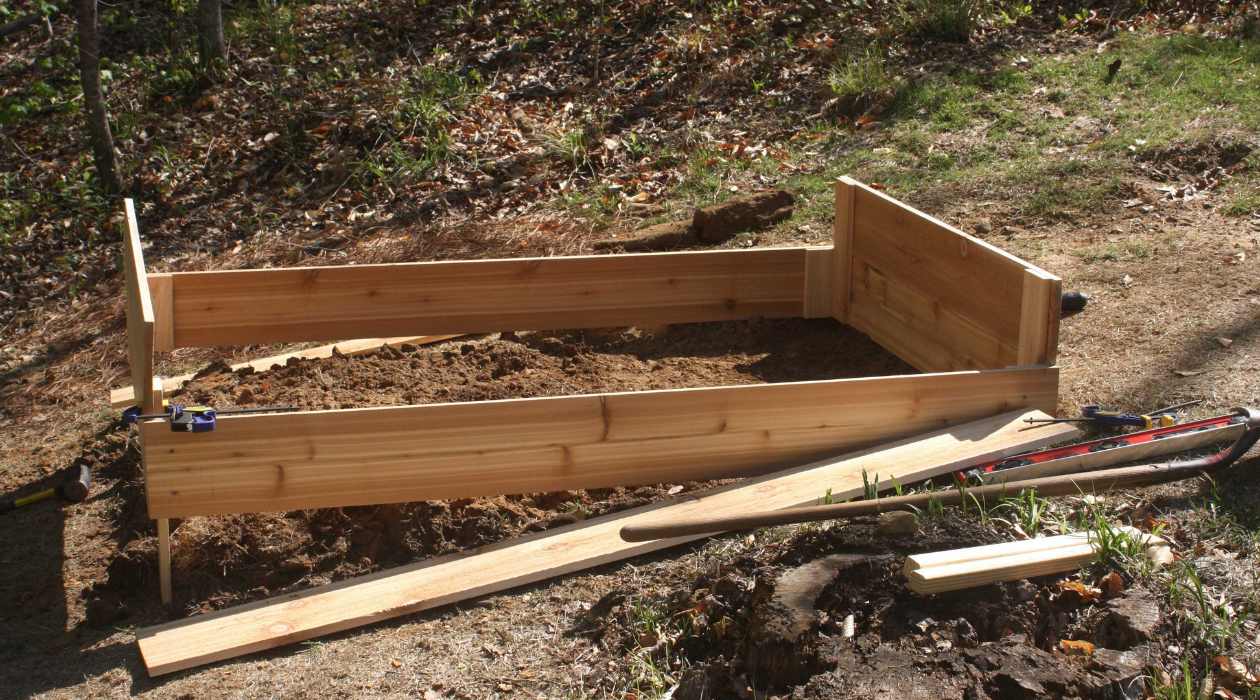

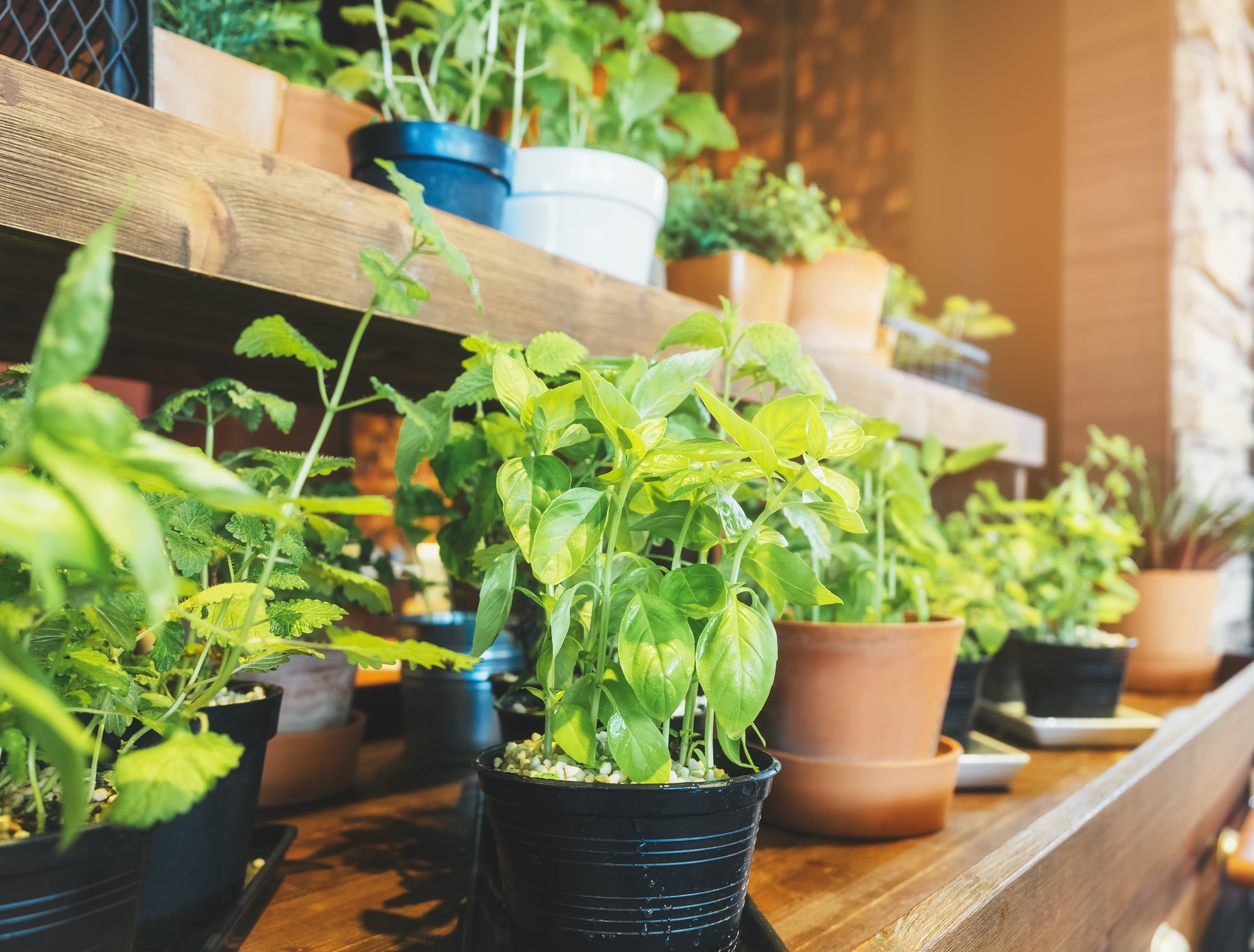
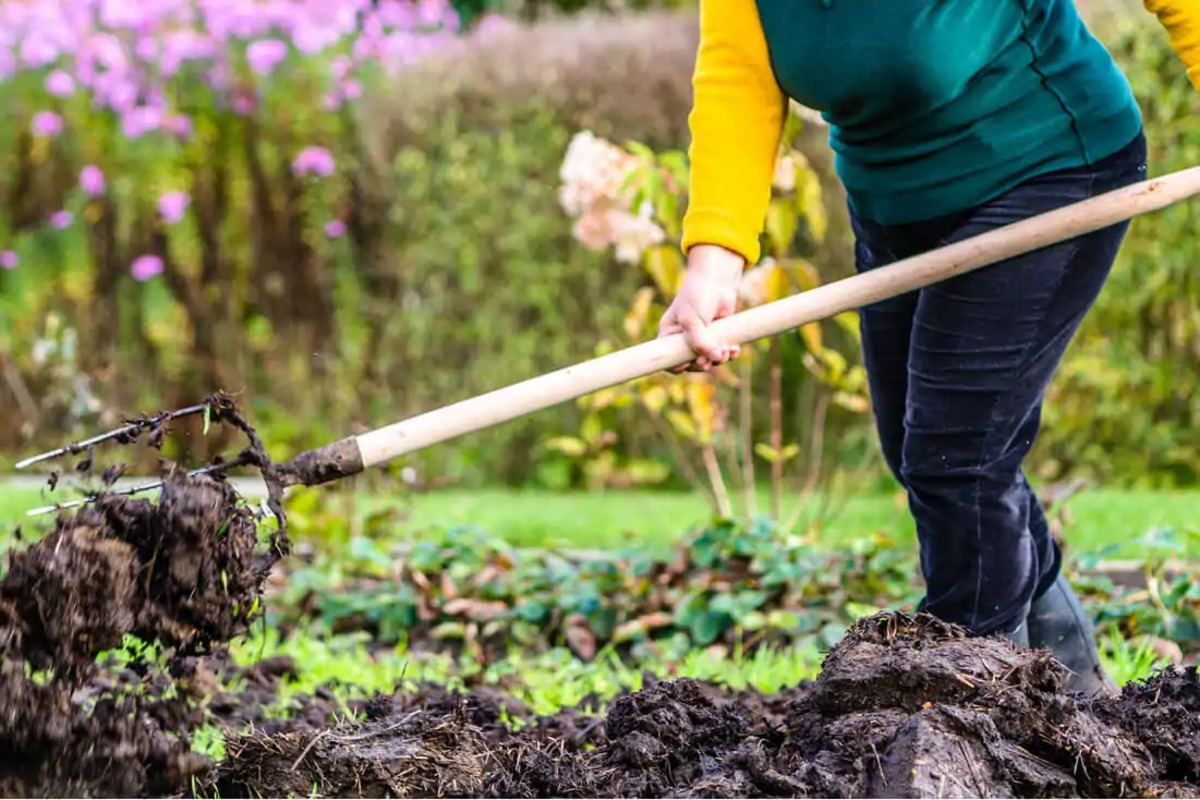

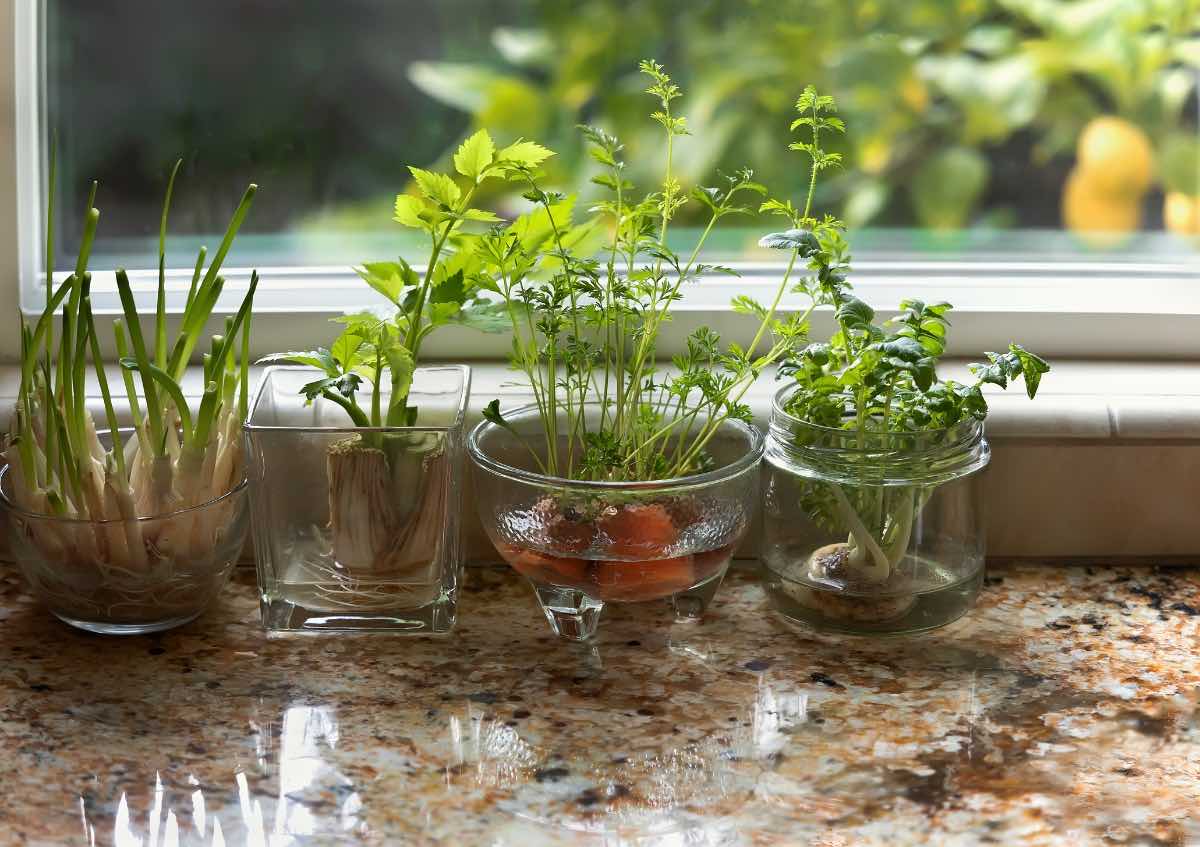

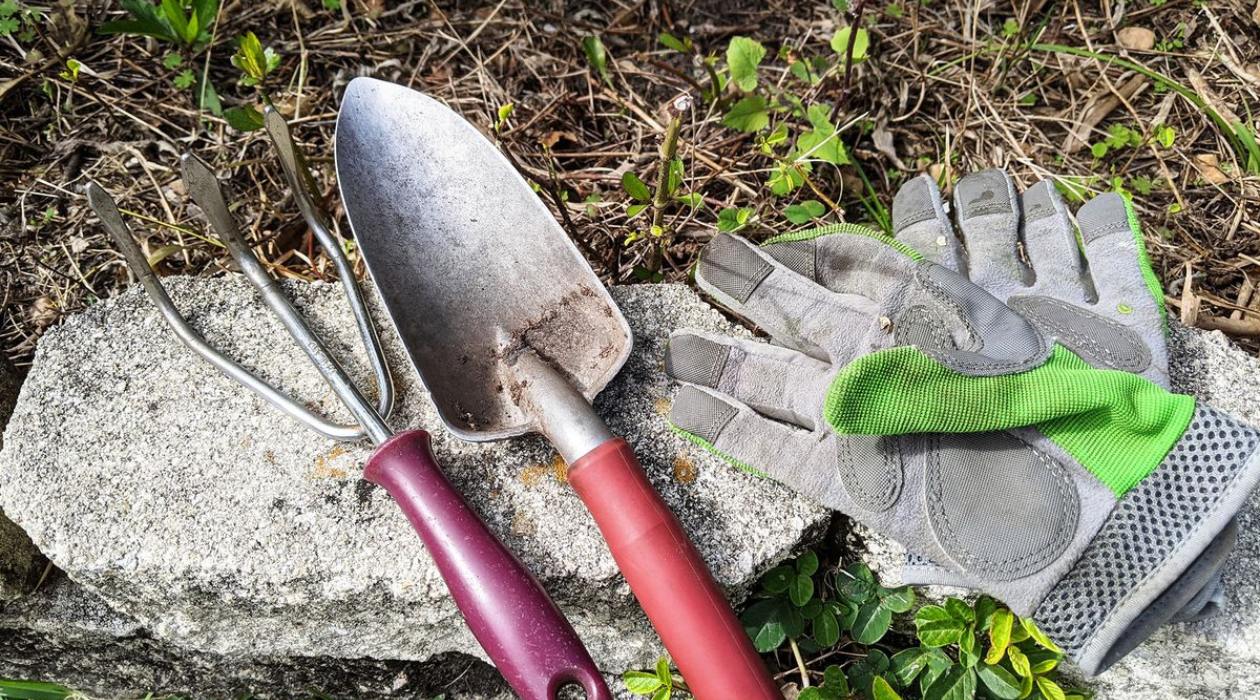






0 thoughts on “How To Start A Community Garden”